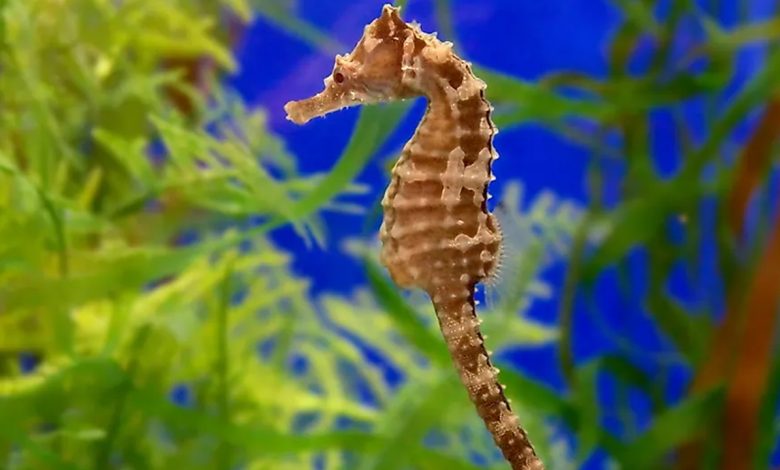Daily Current Affairs for UPSC
Great seahorse to migrate towards Odisha
Syllabus- Environment and Ecology [GS Paper-3]

Context- The great seahorse may be migrating toward Odisha due to extensive fishing off the Coromandel coast, according to a study.
Key Highlights
- Even though fishing is less common off the Odisha coast, the Seahorse may not feel at home there due to a lack of suitable habitat.
What are the Critical Realities about Seahorse?
-
- Ocean ponies are little fish that are named for the state of their head, which seems to be the top of a minuscule pony. They belong to the genus Hippocampus and are considered fish.
- Worldwide, 46 species of seahorses have been identified. Nine of the 12 species found in the Indo-Pacific are found in India’s coastal ecosystems.
- Seahorse populations in India are spread out across a variety of ecosystems, including seagrass, mangroves, macroalgal beds, and coral reefs, and can be found in shallow coastal waters between 45°S and 52°N.
- Indian distribution:
-
-
- With the exception of Lakshadweep and the Andaman and Nicobar Islands, these nine species can be found along the coasts of eight states and five Union Territories, from Gujarat to Odisha.
-
- Slow swimmers:
-
-
- While swimming they keep an upward position and push themselves forward utilizing a delicate rayed dorsal blade.
- They travel by raft, clinging to floating substrata like macroalgae or plastic debris so that they can be carried by the currents of the ocean.
-
- Remarkable Regenerative Propensities:
-
-
- The female uses an ovipositor (egg duct) to deposit her eggs in a brood pouch at the base of the male’s tail, where they are later fertilized, and the male bears a child.
-
- Status of Conservation:
- IUCN status-Vulnerable
- CITES: Appendix II
What are the causes of migration and decline?
- Overexploitation of the Great Seahorse for traditional Chinese medicines, ornamental fish, general destructive fishing, and bycatch from fishing is threatening its population.
- This puts a lot of pressure on the seahorse populations, which rely heavily on the local habitats to keep their extensive and long-lived characteristics.
- The great seahorse’s 1,300-kilometer northward migration from Palk Bay and the Gulf of Mannar to Odisha is probably a response to the extensive fishing that takes place along India’s southern coast.
- On the Coromandel coast, approximately 13 million individuals are retrieved annually.
What Obstacles Does Migrating Pose?
- Lack of the Right Environment: Except for the Chilika region, the Odisha coast lacks coral reefs or seagrass meadows that would make suitable habitats.
- As a result, the species will face difficulties unless fishing methods like bottom trawling and the nets that catch them are stopped.
- Insufficient Conservation Measures: This reaffirms the need for improved conservation and management of the remaining seahorse populations and highlights the lack of monitoring of India’s east coast coastal ecosystems.





.png)



